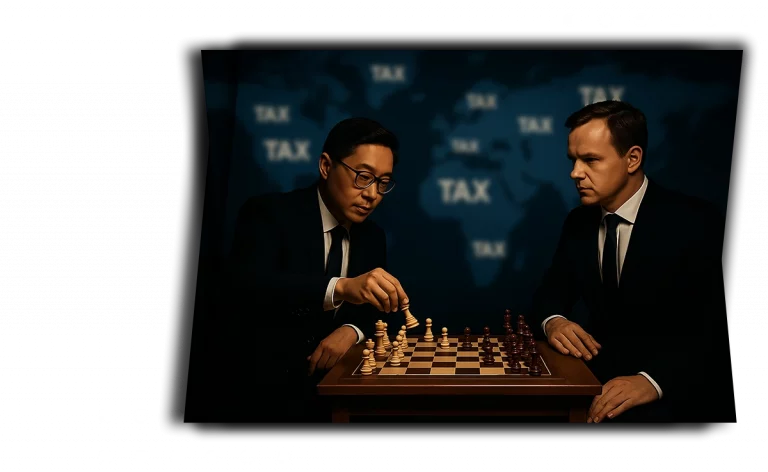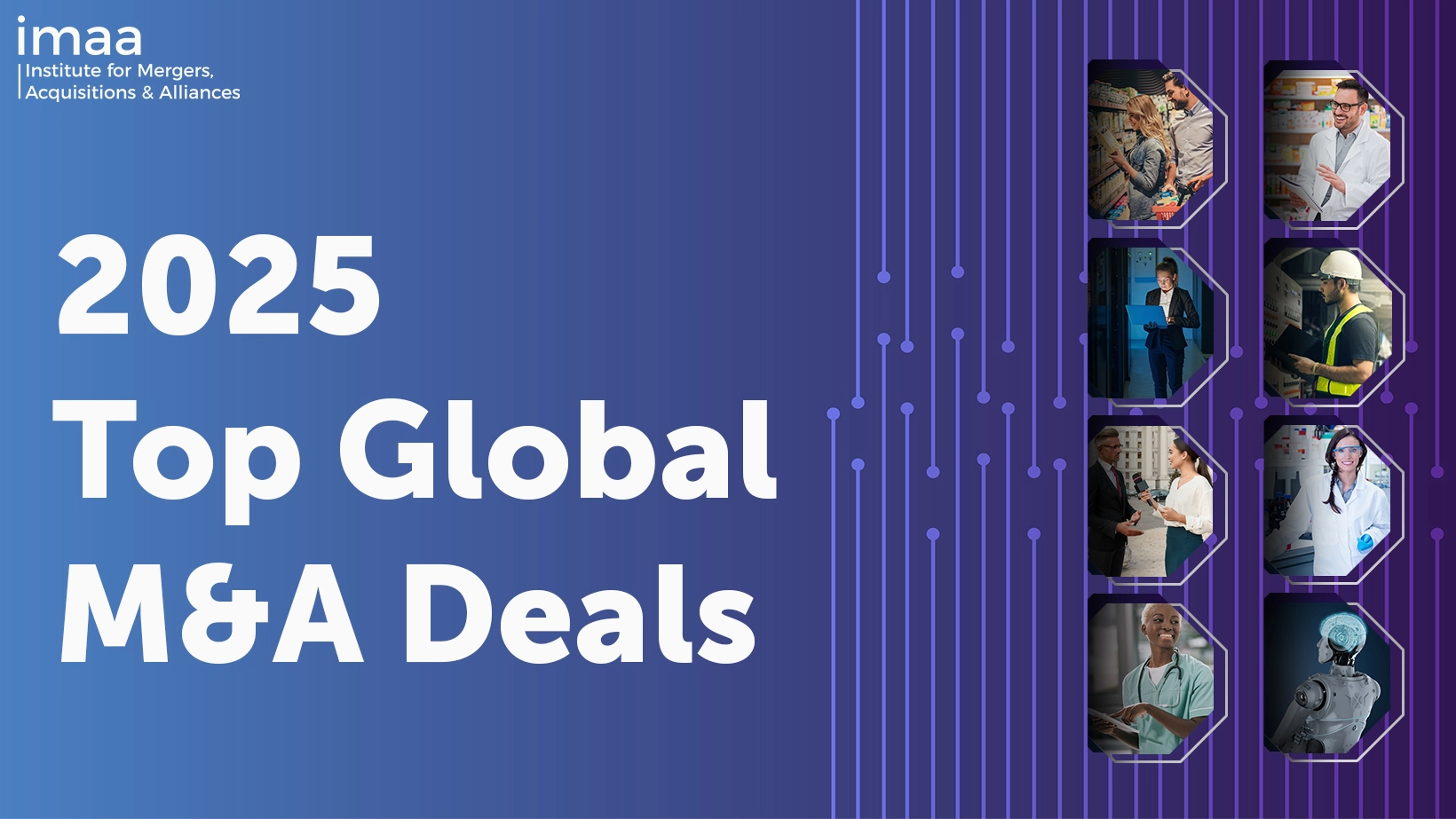
- Blog
M&A in a Tariff-Tinged World: How to Navigate Risk, Valuation, and Deal Structuring

SHARE:
The M&A environment is no stranger to uncertainty—but few external shocks have recalibrated deal dynamics as sharply as the introduction of tariffs during the Trump administration. Initially sweeping and politically charged, these tariffs—and their sporadic easing—have added a volatile, external pressure point to transactions already fraught with complexity.
For buyers, sellers, and their advisors, this isn’t just political theatre. Tariff policy now sits firmly within the realm of core M&A due diligence and deal structuring. It reshapes supply chains, skews financial forecasts, and injects legal and commercial ambiguity into clauses like material adverse effect (MAE), warranties, and earnouts.
Here’s what deal teams need to know—and do—when navigating a transaction in this newly tariff-sensitive environment.
Reframing Due Diligence: It’s Now About Trade Exposure
Trade compliance has often been a checkbox in diligence workstreams. But tariffs have changed the game. What once brief mention in a legal memo now requires a cross-functional dive into supply chains, procurement strategies, pricing models, and end markets.
1. Look Beyond the Target’s Products
Don’t just evaluate whether the target’s products are tariff-exposed. Scrutinize the full upstream and downstream context:
- Raw materials & components: Where are they sourced? What’s the fallback if that region is hit with new tariffs?
- Manufacturing footprint: Are operations exposed to jurisdictions at risk of tariff escalation?
- Supplier contracts: Who absorbs tariff-related cost increases—supplier or buyer?
This is especially important in sectors like chemicals, automotive, industrials, consumer goods, and agri-business, where tariff sensitivity is structurally incorporated into the cost base.
2. Reforecast Demand Sensitivity
Even if the product itself isn’t tariffed, the demand side might be. Take polyethylene, for instance—a critical input for plastic packaging. If tariffs hit downstream markets (like bottled beverages), demand for upstream inputs may suffer a knock-on effect. This indirect impact is often overlooked but can materially alter growth expectations.
3. Layer Legal and Commercial Views
Due diligence teams must integrate legal findings into commercial models. What starts as a legal red flag must be stress-tested against pricing scenarios, customer churn, or supplier renegotiation requirements. The narrative around valuation assumptions needs to reflect this new form of risk.
Contractual Risk-Shifting: Rethinking MAEs and Conditions to Close
When uncertainty escalates, so does the desire to hedge against it. That’s where MAE clauses and bespoke closing conditions become strategically more important.
1. Who Bears the Tariff Shock?
MAE clauses are set to become increasingly tailored to allocate tariff risk explicitly. Sellers—keen to protect the deal—will likely try to exclude tariff impacts from the MAE definition. Buyers, by contrast, will likely push for narrow MAE carve-outs or specific clauses allowing walkaway rights if tariff shocks disproportionately impact the target.
These negotiations are not just legalese. They will directly influence a buyer’s comfort level in committing capital and help determine the scope for deal renegotiation pre-close.
2. Going Beyond the MAE: Custom Closing Conditions
For high-risk targets, buyers may look to insert specific closing conditions—such as confirmation of key supplier or customer agreements post-tariff announcement. This is particularly relevant in industries with tight supply chains or limited alternative sourcing options.
Sellers should expect to see these requests and come prepared with mitigation strategies to keep the transaction on track.
Elevating Reps & Warranties: From Boilerplate to Strategic Tool
Representations and warranties (R&Ws) in M&A contracts will no longer generic risk cushions—rather, they will becoming customized tools to address tariff-specific concerns.
1. Trace the Origin Story
Buyers should seek R&Ws related to:
- Source and pricing stability of key raw materials
- Long-term viability of supplier relationships
- Any known exposure to potential retaliatory trade actions
Sellers, in turn, must carefully assess their disclosure schedules. A sudden tariff-induced cost hike may need to be disclosed under “no undisclosed liabilities” clauses.
2. Consider Custom Trade Compliance Reps
This may include whether the target has received government notices, audit flags, or informal communications suggesting exposure to trade violations or non-compliance with shifting tariffs. With the landscape moving quickly, silence in this area could be costly post-close.
Insurance Has Limits: RWI Policies Tighten Around Trade Risk
Representations and warranties insurance (RWI) has become a go-to risk allocation tool in private M&A. But under tariff volatility, insurers are starting to take a more conservative approach.
1. Expect Broader Exclusions
Tariff-related exclusions are now common—and growing in scope. Even if a buyer has done detailed diligence, insurers may carve out coverage for any losses tied to trade regime shifts.
2. Tighten the Narrative—or Seek Indemnities
To fight back, buyers should:
- Demonstrate strong diligence work, including tariff exposure mapping
- Push to limit exclusions to named issues (rather than general trade policy)
- Where exclusions remain, negotiate specific indemnities from sellers—especially for large, identifiable exposures
As always, leverage dictates outcomes. Well-prepared buyers with competitive offers are more likely to succeed in pushing these protections through.
Valuation and Structuring: The New Normal is Fluid
Tariff uncertainty adds a layer of volatility to pricing and payment terms. Buyers are nervous about overpaying for targets whose margin profile might shift dramatically post-close. Sellers, on the other hand, are loath to give discounts on what may turn out to be temporary disruptions.
1. Historicals Are No Longer Helpful
Standard practice in diligence involves modeling off the last three years of financials. But historical performance is meaningless if 20% of your COGS just got hit with a 25% tariff—or if demand from your largest export market vanishes overnight.
Valuation teams must therefore build new tariff-adjusted cases, simulate multiple pricing scenarios, and agree on how these inform the final price.
2. Earnouts Are Back—But They’re Complicated
We saw this during COVID. Now, in a tariff-uncertain world, earnouts are again a favored tool to bridge valuation gaps.
But they must be crafted with care:
- Define tariff-related costs clearly (ordinary vs. extraordinary)
- Align accounting treatment between buyer and seller to avoid disputes
- Be realistic about thresholds. Overly ambitious earnout targets are a recipe for failure—and litigation.
Practical Playbook: How to Approach M&A in the Tariff Era
Whether you’re evaluating a strategic tuck-in or a transformative cross-border merger, the rules have shifted. Here’s a practical roadmap for transaction teams:
A. Build a Trade Risk Matrix
Map the following:
- Countries involved in procurement, production, and distribution
- Specific tariff lines applicable (current and proposed)
- Exposure by revenue, cost base, and margin impact
- Potential substitutes or alternative geographies
Use this as a foundational tool to inform diligence, valuation, and legal structuring.
B. Align Legal and Commercial Teams Early
Tariff exposure isn’t a purely legal risk—it’s financial, operational, and reputational. Cross-functional coordination is essential. Legal teams must work alongside commercial, supply chain, and finance to build a complete risk picture.
C. Adapt Your Deal Playbook
Revise internal templates and checklists to include tariff-related items across:
- Initial screening and investment committee discussions
- Diligence scopes and third-party advisor mandates
- SPA clause design, especially MAE, reps, covenants, and conditions
- Integration planning—particularly if supply chain realignment is needed post-close
D. Prepare the Board for New Risk Discussions
Boards and investment committees should expect more granular trade risk disclosures and be briefed on how tariff exposure might influence valuation ranges, risk allocation, and integration timelines.
This is not a one-and-done issue—it’s a live, evolving factor in deal approval decisions.
Takeaway
Tariffs are no longer just noise in the macroeconomic backdrop. They’re set to become deal-defining variables that touch everything from diligence to dispute resolution. For dealmakers, the message is clear: treat tariff exposure as a key risk item your M&A process. That means earlier engagement, deeper analysis, sharper contract drafting, and smarter structuring.
TAGS:


Stay up to date with M&A news!
Subscribe to our newsletter


